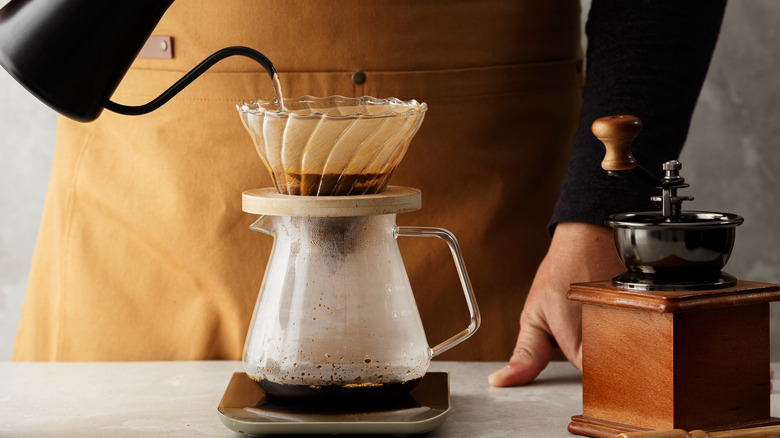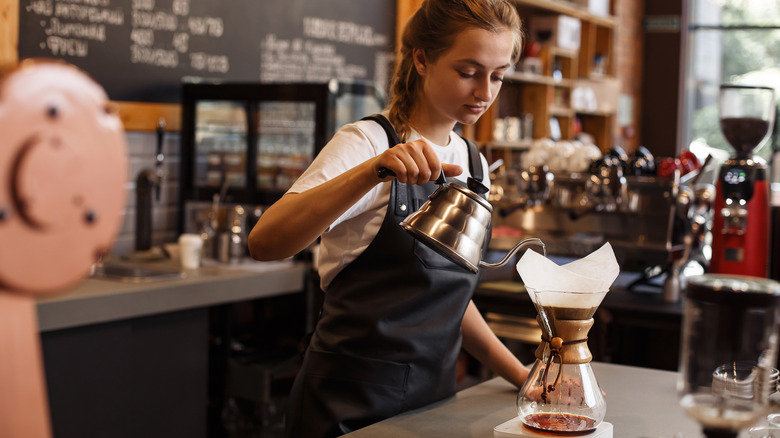The Important Step You're Missing When Making Pour-Over Coffee
With about 115 million bags of coffee produced globally each year (via DisturbMeNot!), it's safe to say that coffee is a familiar beverage enjoyed around the world for both its complex tastes and the caffeine boost it provides. It's a morning ritual for many to wake up and brew that first steaming cup in the morning, allowing the wafting aromas to wake them up and prepare them for the oncoming day. But how people get ahold of their coffee can vary wildly. Some people swing through the Starbucks drive-through while others brew coffee at home with anything from a Keurig to a French press.
One popular way to make coffee at home is with a pour-over dripper, a method that allows you to make a single cup of coffee at a time. It's a relatively simple method to pick up for anybody from an experienced at-home barista to a prospective coffee brewer looking to start skipping Starbucks for a homemade brew. There are tons of tricks to making a perfect pour-over coffee, but one step in particular tends to fly under the radar.
A simple step you can't miss
Preparing a pour-over is quite simple. It requires you to load the dripper with a filter and grounds, then pour hot water over the top. When it comes to simplicity, however, you need to make sure all of your steps are on point. One step that's often missed is wetting the paper filter before adding the ground coffee. This step helps the filter keep its shape while also preventing the resulting brew from having a faint papery taste (via Taste of Home). When you don't use a wet filter, it can affect the taste of the coffee and even spoil the entire cup if the filter folds in on itself, leaving you to fish it out amid the grounds and hot water.
There's more to making a great cup than just wetting the filter. When working with a pour-over, precision is important to make sure you extract all the tasty flavors in your beans without the excessively bitter notes. There are numerous variables when brewing coffee at home, including the temperature of the water, the water-to-coffee ratio, and the grind size, per Serious Eats. While making a pour-over at home is a detailed process, it's also richly rewarding when you taste that first homemade sip.

